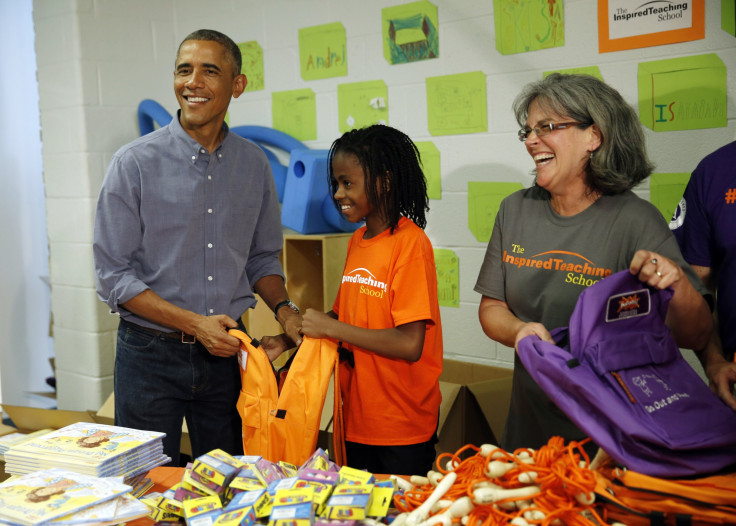Homeless Children In America: Close To 2.5 Million Kids Affected And What Can Be Done To Fix The Issue

There are 2.5 million homeless children in America, according to a new report from the National Center on Family Homelessness at American Institutes for Research. Averaging out to 1 in 30 U.S. children, the homeless youth population has increased by 8 percent since 2012, according to the center's report.
The report, "America's Youngest Outcasts," uses data collected by the U.S Department of Education and estimates from federal and state sources. The latest DOE report states there are 1.3 million homeless students in elementary and secondary schools.
"We know a lot about child homelessness but the thing is we don’t know what to do about it. It really is a solvable problem," Dr. Carmela DeCandia, director of the National Center on Family Homelessness at American Institutes for Research, said in an interview with International Business Times.
"We really can address this issue but we need the political will to act and make a decision to make the issue a national priority and then be able to really target the resources effectively," DeCandia said. "First we need federal leadership to make it a priority and to recognize children who may not be in shelters and may not be on the street, which is not where most children and families are found." Most homeless children are actually "doubled up" and living with families and friends and moving around frequently, DeCandia said. "These numbers truly do reflect the true scope of the problem,” she said.
"The resources would enable states to provide more access to affordable housing, to have services to get families housing as quickly as possible and provide the kind of support services that they need," DeCandia said.

According to the report, the major causes of child homelessness include the overall high poverty rate, shortage of affordable housing, the 2008 recession and racial inequality. The center also listed "the challenges of single parenting; and the ways in which traumatic experiences, especially domestic violence, precede and prolong homelessness for families" as other factors contributing to child homelessness.
Alabama was ranked last in a composite score weighing the extent of child homelessness adjusted for population, well-being of children, risk for family homelessness and policy response. Mississippi, California, Arkansas and New Mexico were ranked in the bottom five.
California had the highest number of homeless children -- nonadjusted -- with a population of 526,708, followed by New York with 258,108 homeless children.
Minnesota was the top-ranked state based on composite score, ranking second in risk for child homelessness and fourth in policy response. Nebraska, Massachusetts, Iowa and New Jersey rounded out the top five states.
"The real driver for child homelessness is poverty," DeCandia said. "Over the years, when the demographics of families have changed, you see that represented in homeless families. Typically, homeless families are headed by a single mother, typically in her late 20s, and she often has two children, many of which are under the age of 6." Many single moms have experienced domestic violence or other traumas that effect their ability to provide for their families, DeCandia said. Single mothers are most at risk for falling into poverty due to limited education and employment opportunities and the cost of housing, DeCandia said.
Homeless children are more at risk to be absent from school or drop out. The institute notes around 40 percent of homeless school-age children, close to 25 percent of which are preschoolers, have mental health problems.
To combat homelessness, the National Center on Family Homelessness recommends increased affordable housing, the prevention and treatment of depression in mothers, a support system for mothers, education and employment support for parents and a needs assessment program for families.
"When kids become homeless, it really takes a toll on them," DeCandia said. "They don't just lose their home, they lose their sense of place and it impacts their development. They could be exposed to higher levels of violence, they could be exposed to a lot of adverse childhood experiences."
© Copyright IBTimes 2025. All rights reserved.






















